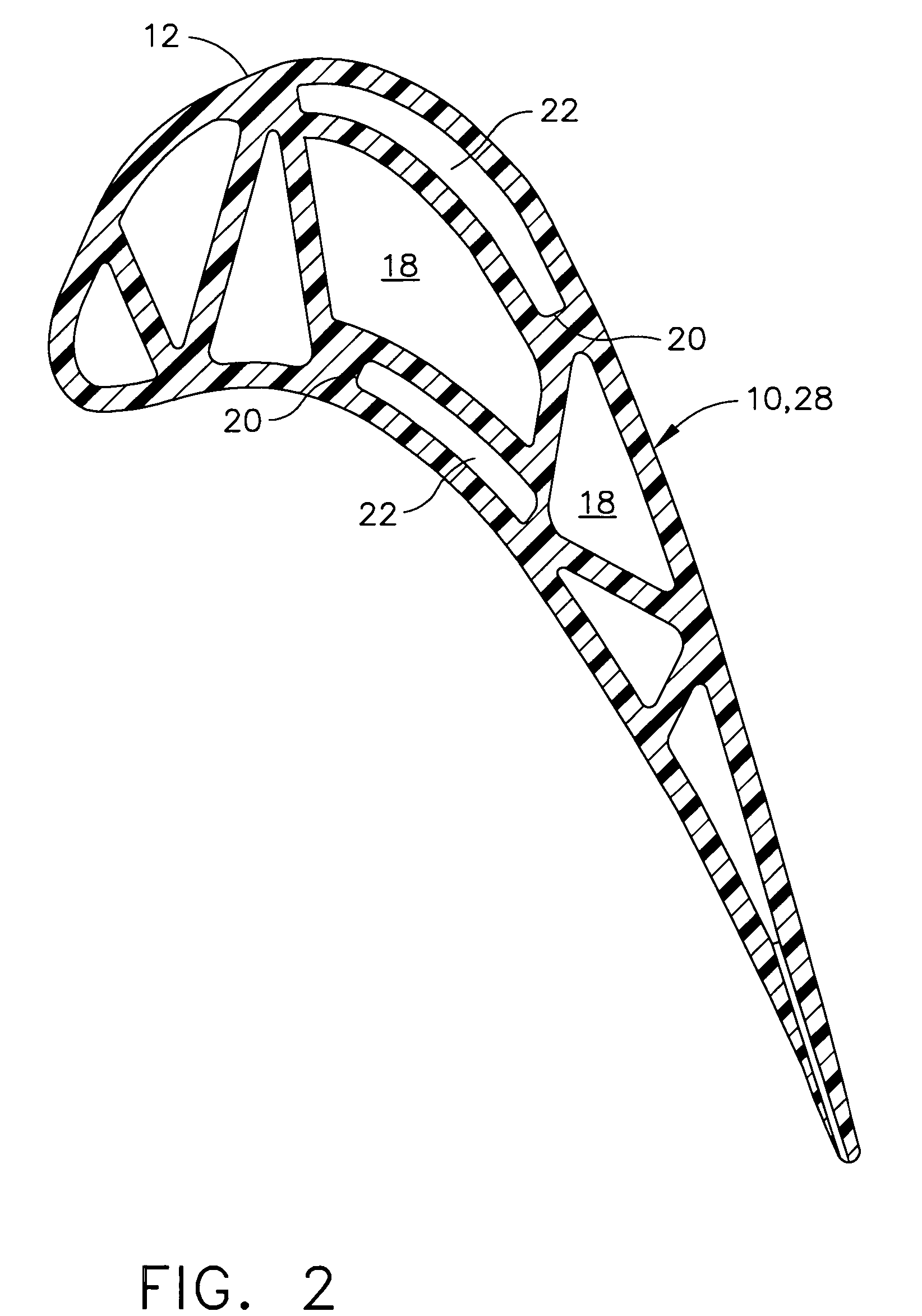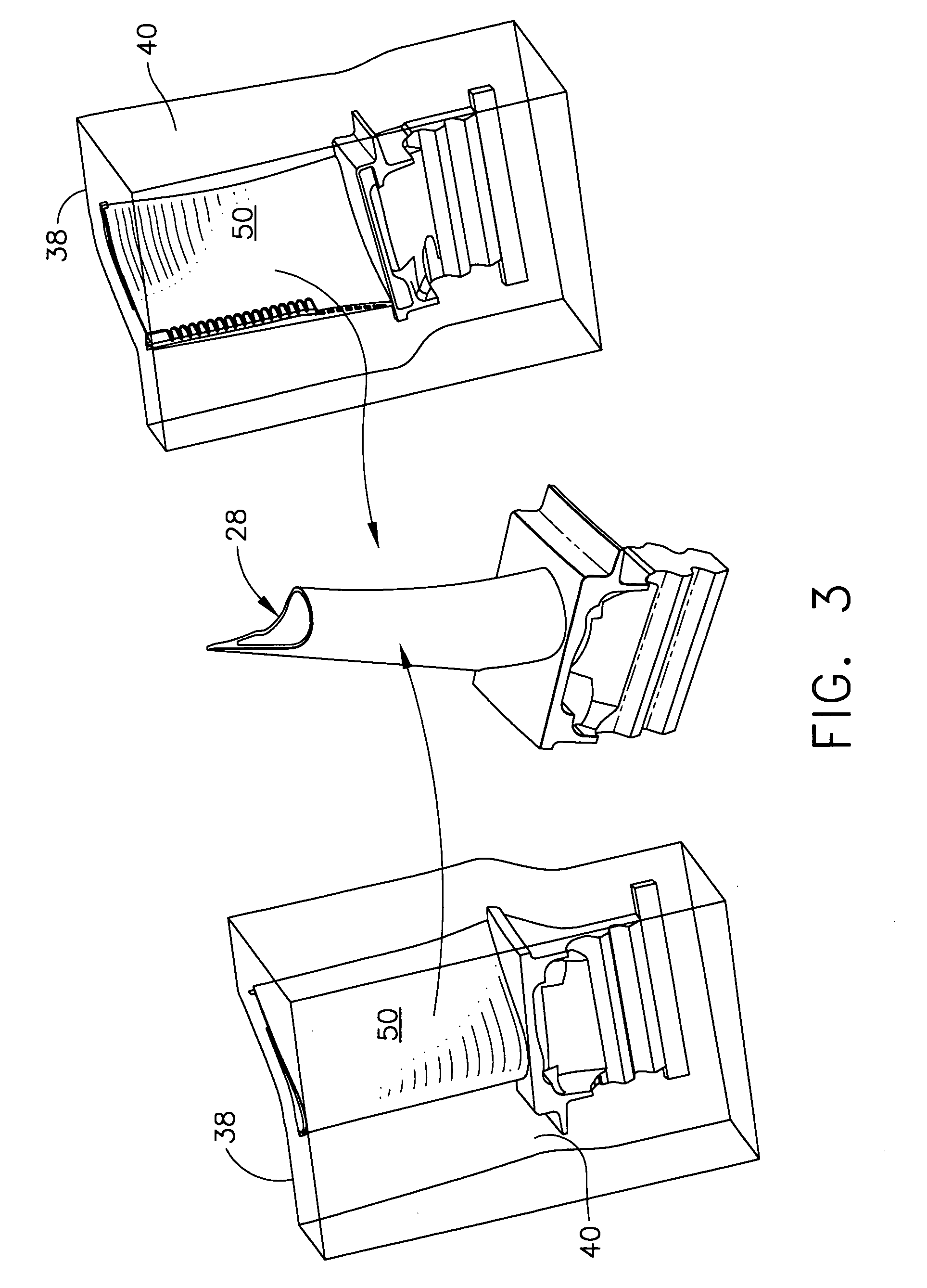Synthetic model casting
a synthetic model and casting technology, applied in the field of manufacturing processes, can solve the problems of increasing the complexity and complexity of the cooling circuit inside the turbine blade, reducing the overall efficiency of the engine, and adding to the complexity of the already complex ceramic core used in typical investment casting of the turbine blad
- Summary
- Abstract
- Description
- Claims
- Application Information
AI Technical Summary
Benefits of technology
Problems solved by technology
Method used
Image
Examples
Embodiment Construction
[0036] Illustrated in FIG. 1 is a component 10 for being replicated by casting. The component may have any suitable configuration for casting, and is in the exemplary embodiment of a turbine rotor blade for a gas turbine engine.
[0037] The exemplary turbine blade 10 includes an airfoil 12 having a generally concave pressure side and an opposite generally convex suction side extending in chord between opposite leading and trailing edges, and extending in radial span between a root and an outer tip.
[0038] The airfoil is integrally joined to a platform 14 at the root thereof which defines the inner boundary for the hot combustion gases which pass over the airfoil during operation in the engine. A multilobe mounting dovetail 16 is integrally formed below the platform for mounting the blade in a corresponding dovetail slot in the perimeter of a turbine rotor disk (not shown).
[0039] The turbine blade illustrated in FIG. 1 has a complex 3-D configuration and external profile as required ...
PUM
| Property | Measurement | Unit |
|---|---|---|
| thick | aaaaa | aaaaa |
| temperature | aaaaa | aaaaa |
| thickness | aaaaa | aaaaa |
Abstract
Description
Claims
Application Information
 Login to View More
Login to View More - R&D
- Intellectual Property
- Life Sciences
- Materials
- Tech Scout
- Unparalleled Data Quality
- Higher Quality Content
- 60% Fewer Hallucinations
Browse by: Latest US Patents, China's latest patents, Technical Efficacy Thesaurus, Application Domain, Technology Topic, Popular Technical Reports.
© 2025 PatSnap. All rights reserved.Legal|Privacy policy|Modern Slavery Act Transparency Statement|Sitemap|About US| Contact US: help@patsnap.com



